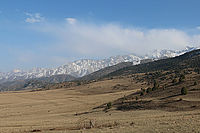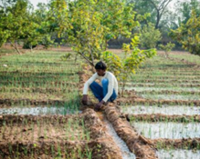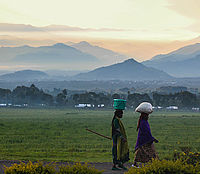Achieving green growth through terrestrial natural capital restoration
Topic: Natural capital & financing solutions
Restoring terrestrial natural capital would not only achieve SDG 15, but produce an additional annual yield of up to USD 75.6 trillion.
About the project
Given the critical role that natural capital and ecosystem services play in maintaining biodiversity, enabling green growth, and achieving the SDGs, Green Growth Knowledge Partnership (GGKP) and ELD joined forces. Together with institutions and local experts new methods for achieving the SDGs through terrestrial natural capital restoration were developed and shall be applied in partner countries of the German Development Cooperation. Country studies seek to demonstrate how restoring terrestrial natural capital can create co-benefits in social and human capital that go hand in hand to achieve several SDG targets.
The project aims to promote terrestrial natural capital restoration policies and practices for the achievement of land-based SDGs.
It will link terrestrial natural capital restoration to multiple SDG targets in selected countries by applying, testing, and honing new methodologies developed by the GGKP Natural Capital Expert Group to:
- calculate the biophysical and/or monetary gaps for achieving national SDG targets through economic modelling and valuation and
- estimate the financial costs of terrestrial natural capital restoration to achieve the SDGs by 2030.

ELD Case Study of Kyrgyzstan
This case study looked at pilot land accounts and sustainable pasture management in Kyrgyzstan, with the aim of terrestrial natural capital resotration and integrating the true value of land assets into the national accounting system. Study experts and researchers covere a broad network including the State Agency on Land Resources, Kyrgyz Soil Scientists Assocation, the National Statistical Committee of the Kyrgyz Republic, American University of Central Asia, OSCE Academy, GIZ, GGKP, and ELD.
This project had four main components: 1) piloting land accounts and applying natural capital accounting to land resources; 2) a geo-portal of the information of land systems using GIS and satellite data; 3) creating and testing the National Soil Information system in pilot territories, and 4) applying the ELD 6+1 step approach to improve pasture management in the Suusamyr Valley. The study was ultimately designed to help decision-makers assess the condition of pastures and the benefits of restoration initiatives, and how applying a natural capital approach using geospatial data and assessing economic aspects of land use – can foster the adoption of sustainable land management practices and support the national green economy process.
For more information, take a look at the information brief (EN or RU) and the GGKP news article.

ELD Case Study of India
This case study on land remediation in the Bundelkhand region of Madhya Pradesh, India, was undertaken by the Development Alternatives Group and the ELD Initiative. It examined the cost and benefits of implemented land and water intervention programmes using the ELD methodology in three districts, aiming to create relevant policy recommendations and contribute to SDG goals and targets.
Using the ELD methodology, the study assessed a number of land and water based interventions for land remediation across three districts in the semi-arid region of Bundelkhand, which is prone to erratic rainfall. Looking at both intervention and control villages, it examined natural, social, and human capital, and integrated primary survey data and satellite data. Findings reflected that land use changes have taken place in the study area during this period, resulting in agricultural improvements, better access to irrigation facilities, gains in livestock benefits, and positive changes in other ecosystem services. The study also produced a replicable toolkit for ecosystem evaluation and relevant policy recommendations for informed decision-making and the micro and macro level.
For more information, take a look at the report and policy brief.

ELD Case Study of Rwanda
GGKP and ELD's first case study on natural capital restoration was conducted in Rwanda by a team of experts led by Montclair State University. This study aims to highlight the critical role of natural capital in macro-economic outputs, and to facilitate improved decision-making in green growth policies and to achieve national SDG targets.
Through integrated and innovative methods, the study explores five policy scenarios on sustainable use of land and green growth: (1) expansion of agroforestry, (2) cropland consolidation, (3) consolidation of agroforestry and cropland, (4) agricultural improvement in fertilization and irrigation and (5) comprehensive implementation of policies combining scenarios 3 and 4. The results help to understand how land degradation due to erosion can affect not only economic indicators such as GDP, poverty reduction, genuine savings, and unemployment, but also land assets, land use changes, ecosystem service supply, and terrestrial natural capital.
For more information, take a look at the report, policy brief and news article.

GGKPs Working Group on Natural Capital
GGKP is a global network of organisations and experts that identifies and addresses major knowledge gaps in green growth theory and practice. Established in November 2017, the GGKP Expert Group on Natural Capital explores state-of-the-art methods, models, data and tools to achieve its three goals of pushing forward the knowledge frontier around natural capital and green growth; mainstreaming natural capital in global green growth activities; and supporting stronger implementation of natural capital commitments in national economic plans. The group is comprised of 26 experts from across GGKP’s partner institutions, each with at least 10 years of experience working with natural capital.
SDGs Erosion – How terrestrial natural capital will save the 2030 Agenda
